Funk music is an electrifying blend of rhythm, groove, and soul.
It’s a genre that transcends mere musical notes to become a powerful expression of emotion and creativity.
For any music producer, delving into the world of funk can open up new avenues of musical exploration and innovation.
Understanding the intricacies of funk music, from its chord progressions to its rhythmic patterns, can enhance your production skills, no matter the genre you specialize in.
That’s why, as a music producer, embracing the elements of funk can help you add a new dimension of groove and soul to your tracks.
In today’s lesson, we’ll cover:
- The basics of funk chord progressions ✓
- The role of guitar and piano in funk ✓
- Essentials of rhythm & groove in funk ✓
- Characteristics of funk chords ✓
- Major and minor chords in funk music ✓
- Extended chords and voicings in funk ✓
- Techniques for playing funk guitar and piano ✓
- Influences and inspirations in funk songs ✓
- Common funk chord progressions ✓
- Applying funk progressions in digital music production ✓
- Much more ✓
After reading this article, you’ll understand the essence of funk music and its components.
You’ll be equipped to integrate funk chord progressions into your productions like a true professional.
As well as understand the subtleties of rhythm and groove and apply techniques specific to funk guitar and piano.
So, let’s dive in…
Table of Contents
- The Basics of Funk Chord Progressions
- Diving into Funk Chords
- Playing Funk Guitar: Techniques and Tips
- Funk Piano Techniques for Enriching Chord Progressions
- Influences and Inspirations in Funk
- 11 Common Chord Progressions in Funk Music
- #1. The Classic Funk Foundation
- #2. Jazz Influences in Funk
- #3. Vamping on One Chord: The James Brown Approach
- #4. The Funky Blues Progression
- #5. Minor Key Magic: The Stevie Wonder Touch
- #6. The F G Progression: Simplicity and Groove
- #7. Major Elevations: A Distinct Funk Sound
- #8. Syncopated Minor Progressions: A Modern Twist
- #9. Slash Chords and Their Funky Appeal
- #10. Riff-Based Progressions: The Backbone of Funk Guitar
- #11. Connecting Chords: Creating Seamless Funk Transitions
- Funk Chord Progressions: Final Thoughts
The Basics of Funk Chord Progressions
Funk music has significantly influenced modern music production with its rich history and vibrant sound. Understanding its chord progressions is essential for any producer looking to incorporate this genre into their work. Let’s delve into the core elements of funk chord progressions and how they can transform your tracks.
-
Understanding Chord Progressions in Funk Music
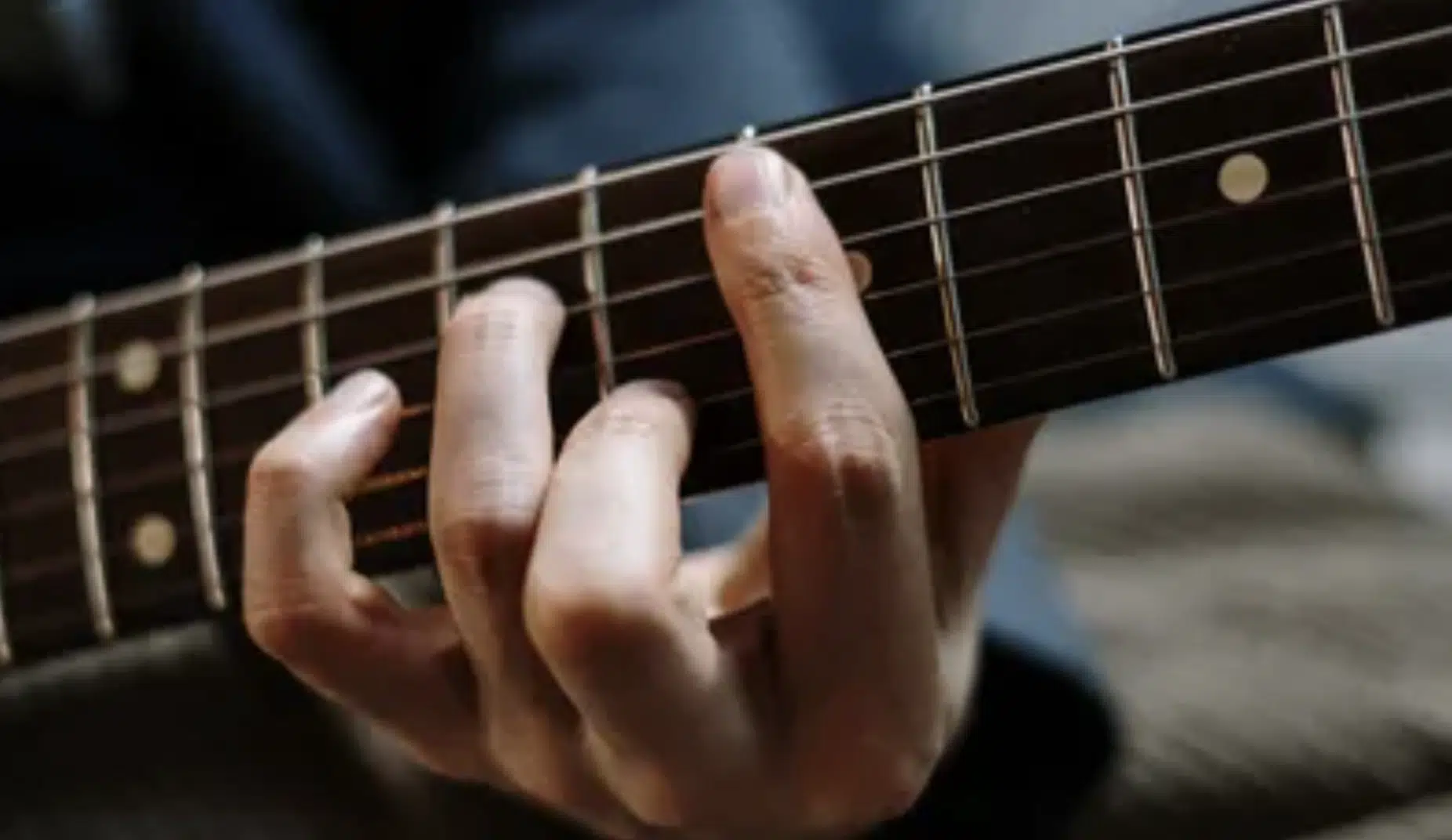
Funk chord progressions are the backbone of funk music, providing a foundation for its characteristic groove and rhythm.
To create a distinct sound, these progressions often utilize:
- Extended chords
- Syncopation
- Unique voicings
The key to mastering funk chord progressions is understanding their structure.
Typically, these progressions involve a series of chords played in a specific order, often repeating throughout the entire song.
This repetition of the same progression creates a hypnotic groove.
A notable aspect of funk chord progressions is their use of both major and minor chords, often blended in innovative ways.
This mixture of chord qualities and chord sequences contribute to the dynamic and expressive nature of funk music.
-
The Role of Guitar and Piano in Funk Chord Progressions
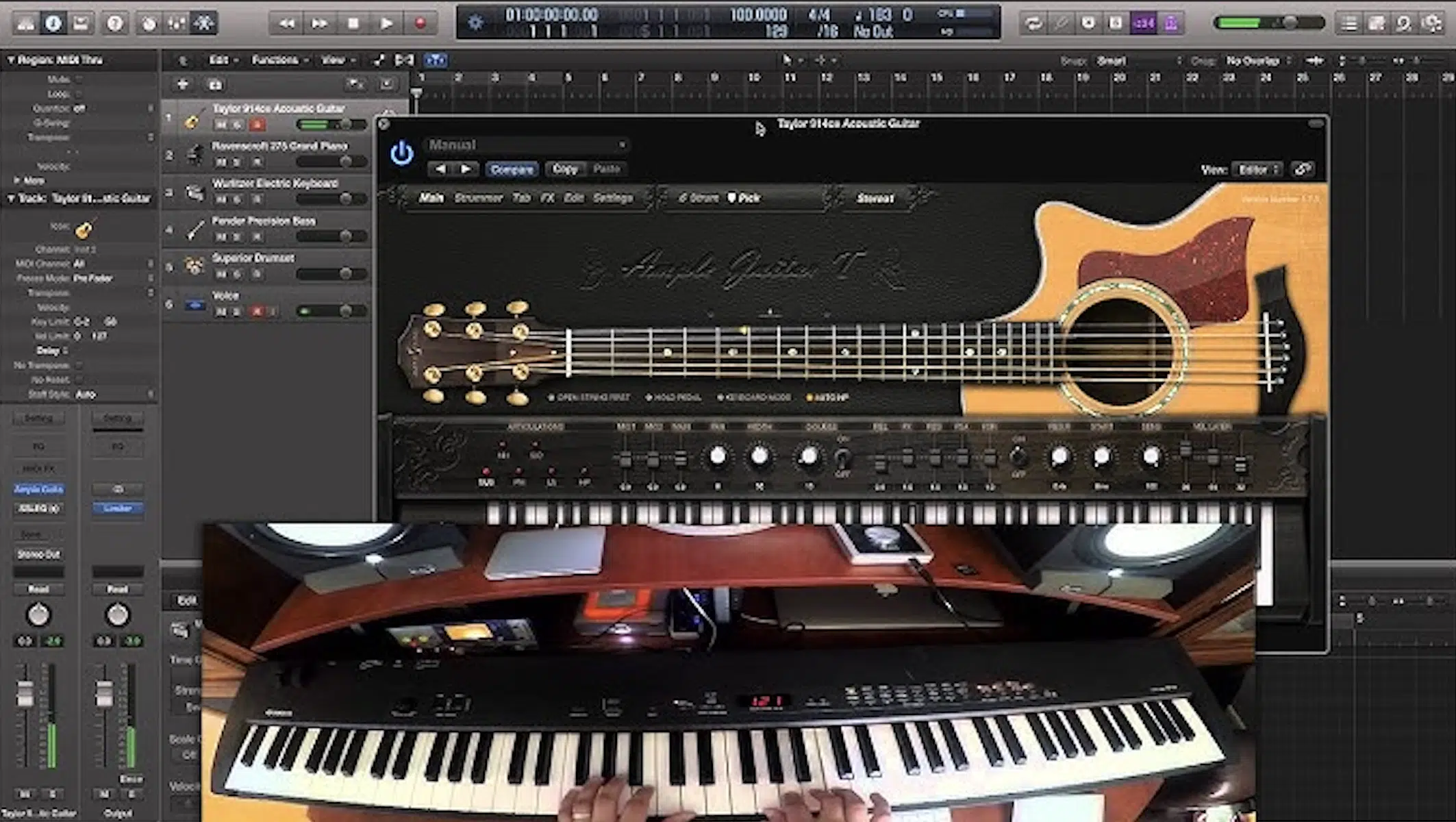
In funk music, the guitar and piano play crucial roles in defining the sound of the chord progressions.
Funk guitar is known for its rhythmic playing style 一 often using muted strumming and percussive techniques to accentuate the groove.
Piano in funk music often complements the guitar by providing harmonic depth.
Funk pianists use a variety of chord inversions and syncopated rhythms to enrich the texture of the music.
The interplay between guitar and piano in funk chord progressions creates a rich tapestry of sound.
This combination is central to achieving the classic funk sound and can be inspiring for digital music producers.
-
The Essentials of Rhythm and Groove in Funk

In funk music, rhythm and groove are everything, forming the heartbeat of funk and driving the music forward.
The essence of funk lies in its strong, syncopated rhythms.
This emphasizes the first beat of the measure (known as the downbeat) and incorporates off-beat rhythms to create a compelling groove.
Extended chords are a hallmark of funk music, adding depth and complexity to the rhythm.
These chords, such as seventh, ninth, and eleventh chords, contribute to the unique sounds of funk by providing a richer harmonic texture.
They allow for more rhythmic interplay between the chords and the basslines.
Syncopation is a key rhythmic element in funk songs 一 accentuating beats that are usually not emphasized in other music styles.
This off-beat rhythmic pattern is a fun way to create a distinctive, captivating, and danceable groove.
The interplay between syncopated rhythms and chordal harmony gives funk its characteristic sound and feel.
Diving into Funk Chords
Funk chords are more than just a series of notes. They embody the essence of funk music with their syncopated rhythms and unique tonal qualities. So, let’s explore the characteristics of these chords and how they contribute to the iconic sounds of funk.
-
Characteristics of Funk Chords
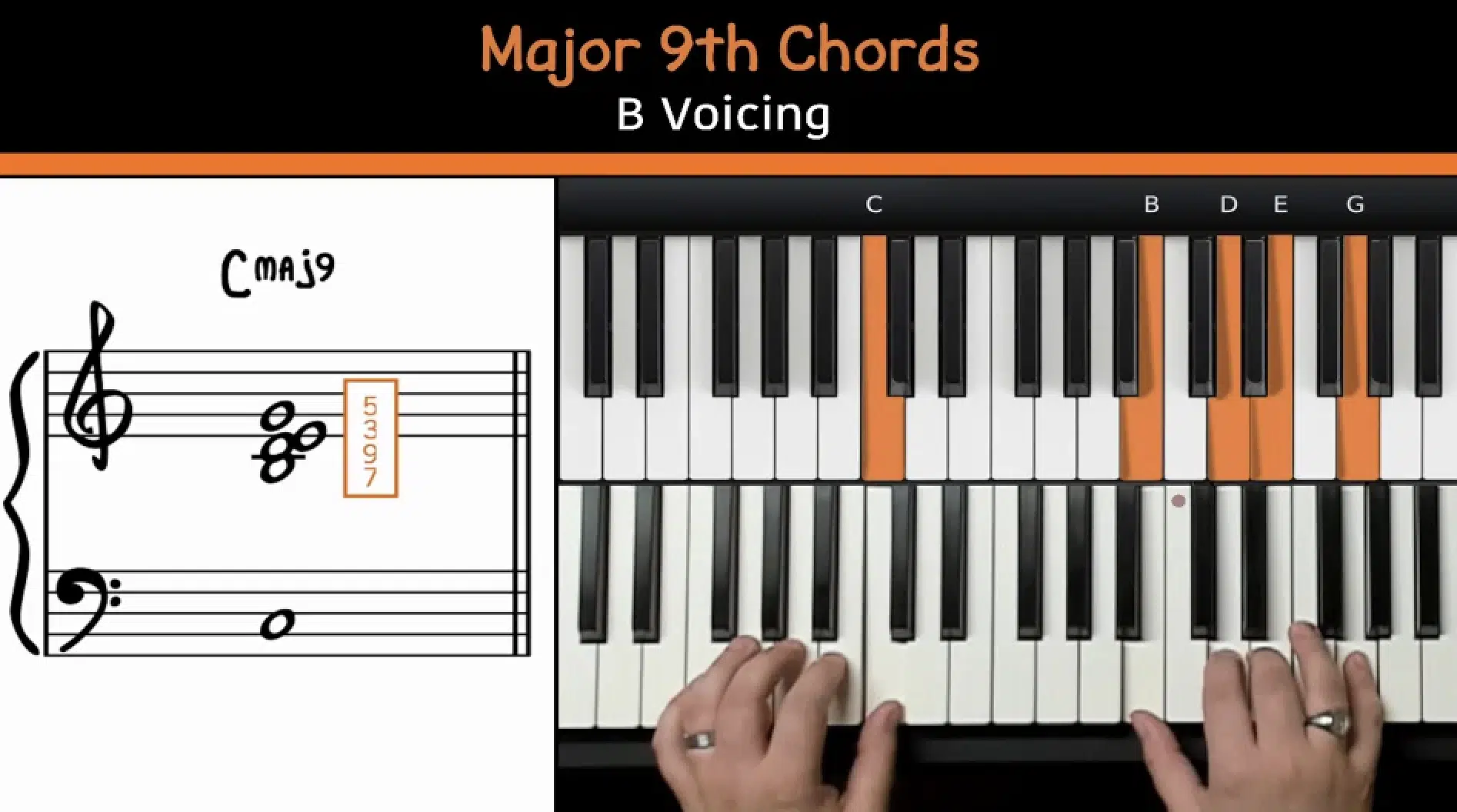
Funk chords are notable for their use of extended and altered chords, which add color and depth to the music.
These chords often include additional notes beyond the basic triad, such as:
- Sevenths
- Ninths
- Elevenths
When you listen to these chords in funk songs you can hear their complex and sophisticated sound.
The voicings of funk chords are critical.
Musicians in this genre often choose voicings that highlight the rhythmic aspect of the music/song.
NOTE: Techniques like ghost notes, where a note is faintly played or implied rather than sounded, are common, adding a subtle but impactful rhythmic complexity to the chords.
In funk, it’s not just what chords you play but how you play them.
The rhythmic placement of chords is crucial.
Strumming or hitting the chords at the right moment, often syncopated or off-beat contributes significantly to the genre’s unique feel.
-
Major Chords in Funk Music
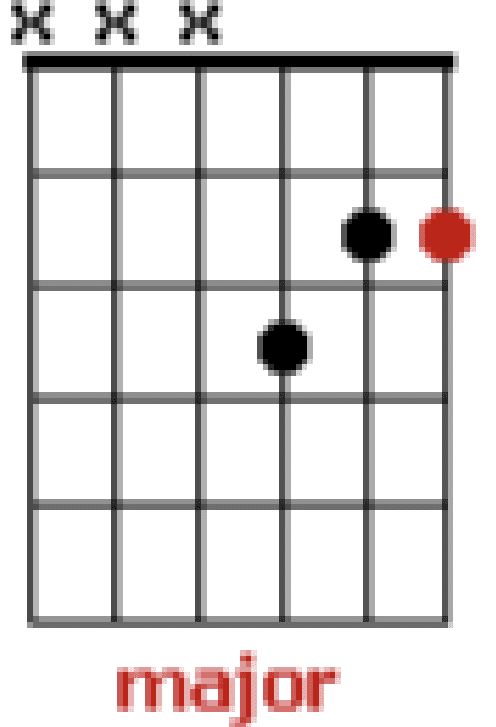
Major chords in funk music are often used to convey a sense of joy, brightness, and energy.
They form the foundation of many upbeat and lively funk tracks, offering a harmonic contrast that adds to the dynamic range.
With their inherently happy and open sound, major chords are fundamental in creating the optimistic and infectious grooves that funk is known for.
In funk, it’s not just the use of major chords but also how they are played.
Funk guitarists and pianists often play major chords with a staccato or syncopated rhythm.
This emphasizes the off-beats to create a groovy feel.
For example, the guitar in “September” by Earth, Wind & Fire effectively uses major chords with syncopated rhythms.
This creates a memorable and uplifting sound that is quintessentially funk.
Major chords can be heard in many iconic funk songs, each bringing a unique flavor.
In “Give Up the Funk” by Parliament, the major chords are used to create a fun and energetic atmosphere 一 driving the song’s infectious rhythm and making it a classic in the funk genre.
-
Minor Chords in Funk Music
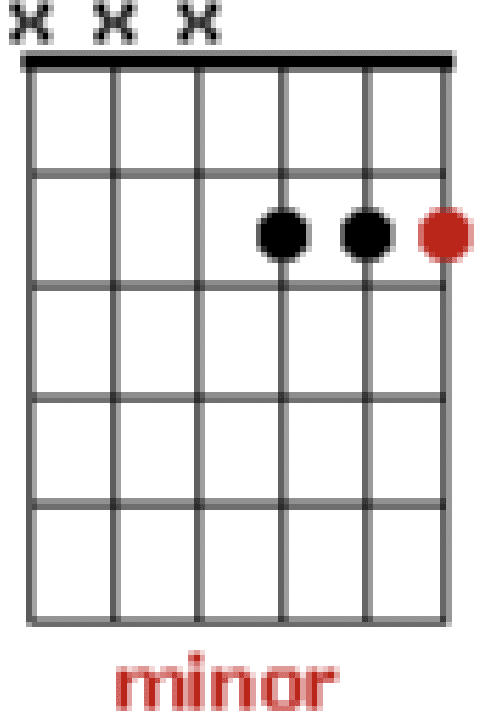
Minor chords in funk music often convey emotional depth, tension, and soulfulness.
They provide a counterbalance to the brighter and more upbeat major chords, adding a layer of complexity to funk’s harmonic structure.
Minor chords are key to creating the more moody and introspective moments in funk music, offering a rich palette for emotional expression.
Musicians often play expressive techniques to enhance their emotional impact when playing minor chords in funk.
For instance, in order to add expressiveness to minor chords, you might use:
- Bends
- Slides
- Vibrato
You can hear this in the guitar work of “Superstition” by Stevie Wonder.
These techniques bring a human touch to the chords, making the song more expressive and resonant.
Minor chords feature prominently in many classic funk tracks, contributing to the genre’s diverse emotional landscape.
In “Flash Light” by Parliament, the minor chords create a funky yet slightly mysterious vibe 一 showcasing the versatility and depth these chords can bring to funk music.
-
Exploring Extended Chords and Voicings in Funk
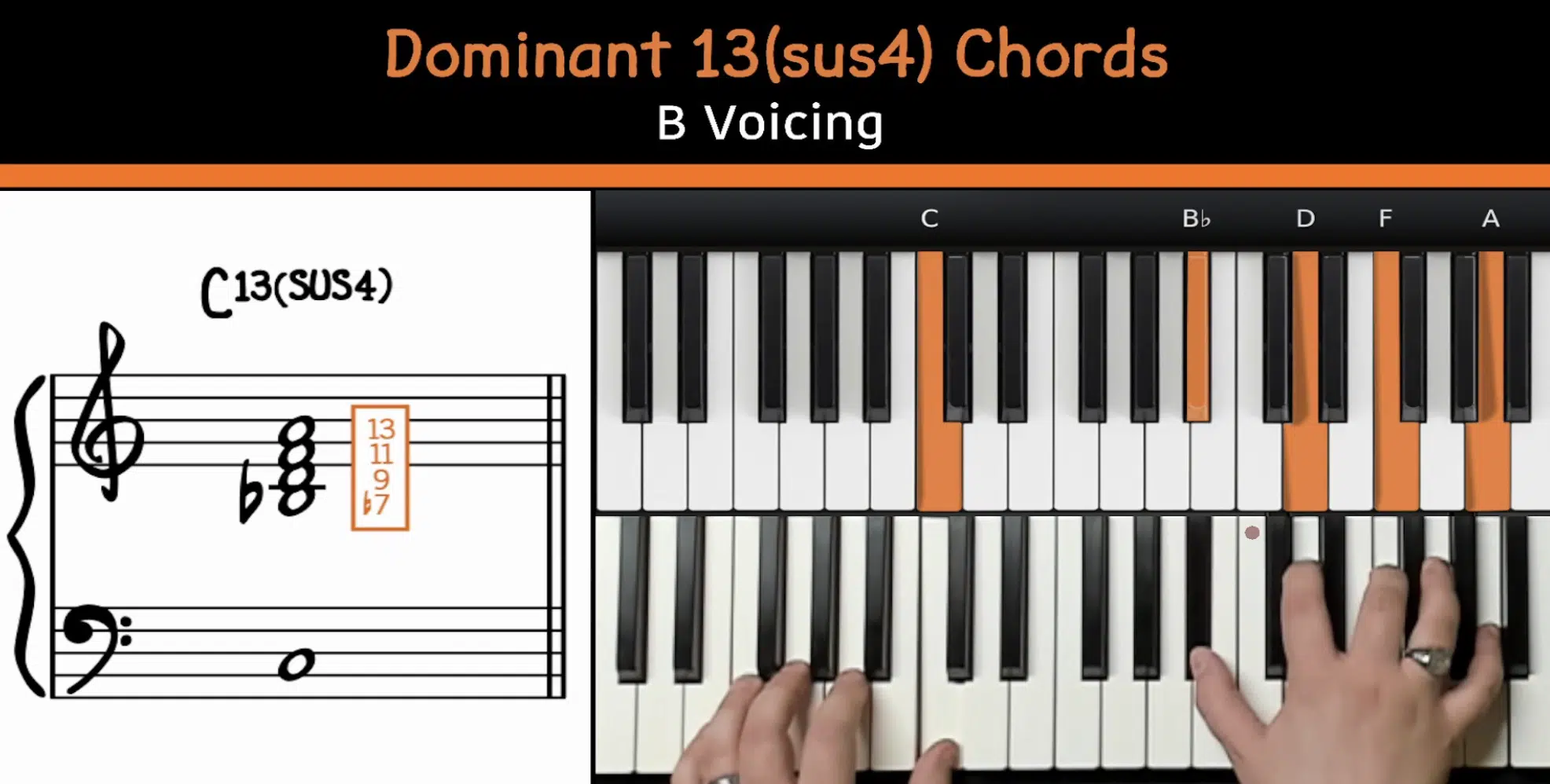
Extended chords and voicings are a hallmark of funk music.
These chords, which include additional notes beyond the basic triad, add complexity and richness to the chord progressions.
The use of seventh, ninth, and eleventh chords in funk creates a sound that is both sophisticated and deeply groovy.
These chords provide a wider range of harmonic possibilities 一 allowing for more expressive chord progressions.
Mastering these extended chords and their voicings is essential for any producer looking to create authentic funk music.
The right voicings can make a chord progression come alive, bringing a distinctive funk sound to your tracks.
Playing Funk Guitar: Techniques and Tips
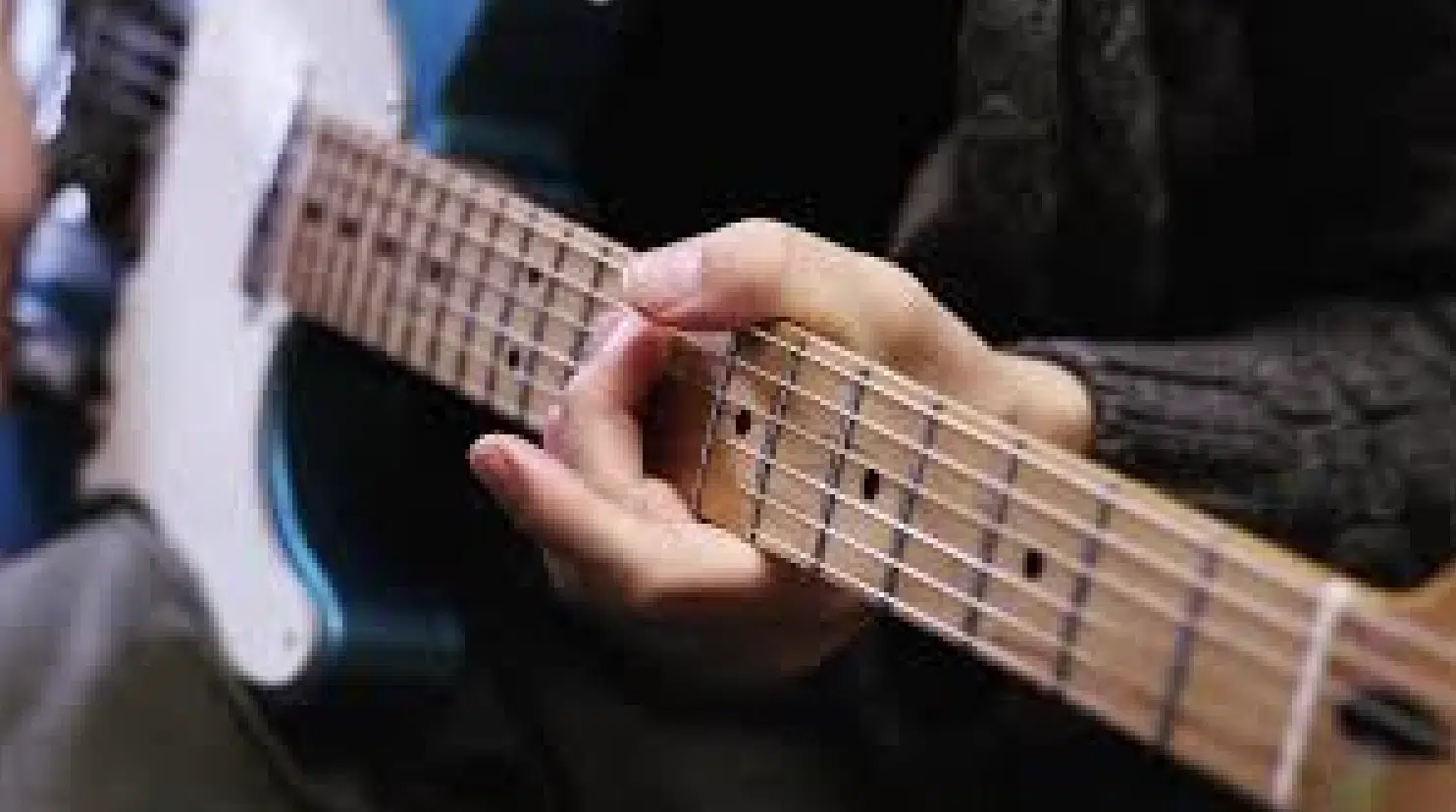
When you play funk guitar, it’s all about rhythmic precision and expressive techniques.
‘Chicken scratch’ is a widespread technique where the guitarist uses a muted strumming pattern to create a percussive, rhythmic sound.
The chicken scratch technique involves lightly touching the strings with the fretting hand while strumming.
This provides a scratchy, rhythmic noise that is a funk rhythm and funky music staple.
Percussive strumming is another essential technique in funk guitar playing.
It involves using the guitar as a rhythmic instrument, often with muted strums that contribute to the overall groove of the track.
Additionally, incorporating guitar effects like wah-wah and phaser can enhance the funk sound 一 adding character and depth to the guitar parts.
These effects accentuate the rhythmic nature of the guitar playing and funk guitar parts, making the instrument stand out.
Funk Piano Techniques for Enriching Chord Progressions
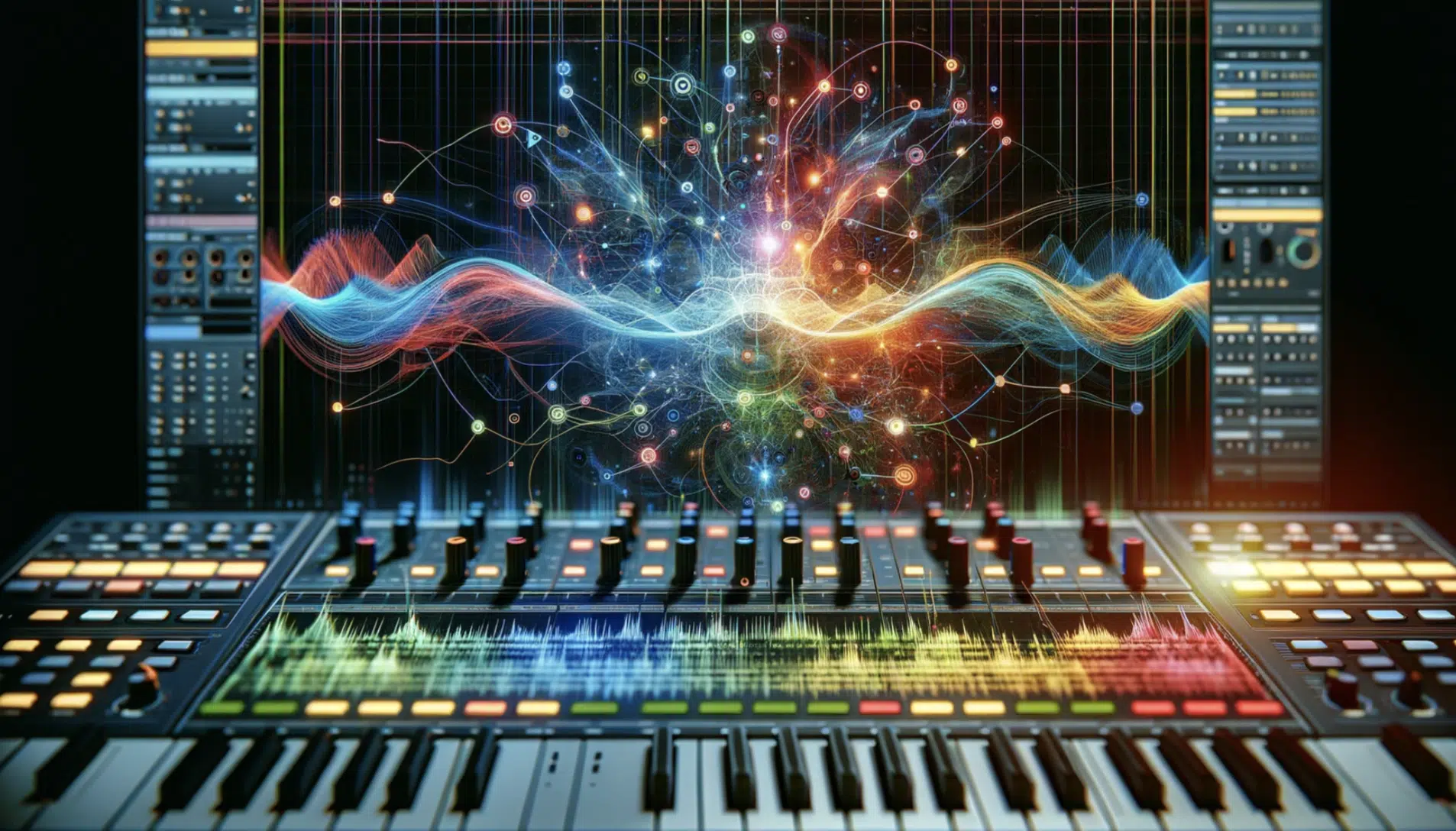
Funk piano playing is distinguished by its rhythmic complexity and inventive chord voicings.
Pianists in this genre often use off-beat syncopation and staccato playing to create a dynamic and energetic sound.
These techniques involve playing chords and notes in a short, detached manner, adding to the percussive quality of the music.
Incorporating techniques like grace notes, trills, and glissandos can add a distinct flair to funk piano parts.
Grace notes are quick, and auxiliary notes play just before the main note.
Trills involve rapid alternation between two adjacent notes, creating a vibrating effect.
Glissandos are sweeping movements across the keyboard, creating a smooth, gliding sound.
These embellishments bring a sense of spontaneity to funk songs that make people want to listen over and over again.
Understanding the interplay between the left and right hands is crucial in funk piano.
- The left hand 一 Lays down a solid rhythmic foundation, often with basslines or lower chord voicings.
- The right hand 一 Adds harmonic color and rhythmic accents.
This interplay creates a rich tapestry of sound, essential for achieving the classic funk piano style.
Incorporating these techniques isn’t just something to think about; it can completely transform your funk songs as a whole.
Influences and Inspirations in Funk
Numerous artists and styles have shaped funk music over the years. Understanding these influences and their impact on funk chord progressions can provide valuable insights for modern music producers.
-
The Legacy of James Brown and Sly Stone in Funk Music
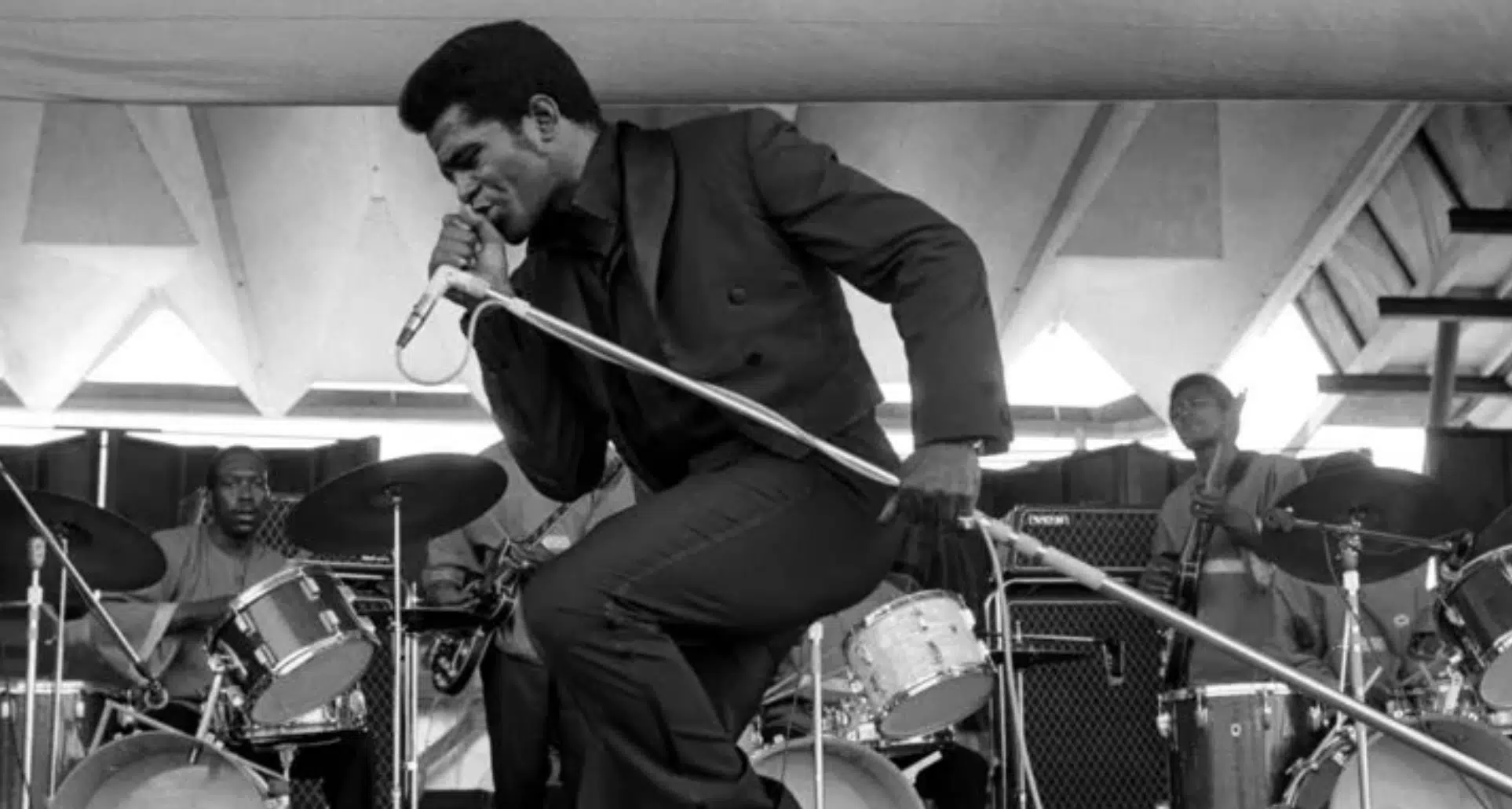
James Brown and Sly Stone are iconic figures in funk music, known for their groundbreaking contributions to the funk genre and captivating music style.
Their funk songs have influenced countless artists and continues to inspire modern music production enthusiasts.
The chord progressions in the music of James Brown and Sly Stone are characterized by their simplicity and groove.
These artists mastered the art of creating compelling music with minimal harmonic complexity.
Every funk album they have produced, down to the backing tracks.
So, instead of trying to read sheet music, try using one of their funk songs as a reference.
-
Stevie Wonder & Curtis Mayfield
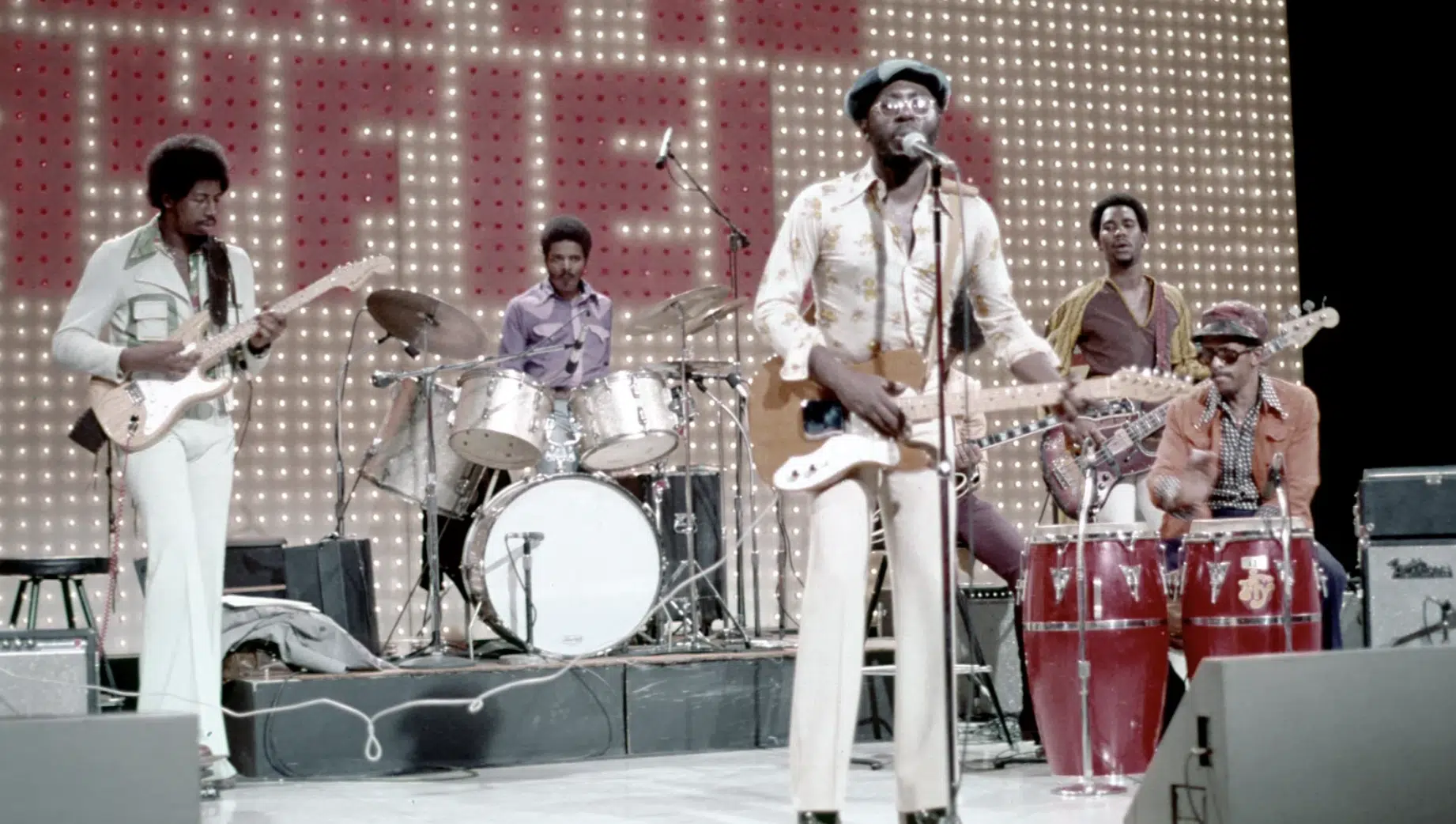
Stevie Wonder and Curtis Mayfield brought sophistication and innovation to funk music; all the notes they struck seem to resonate.
Their use of complex chord progressions and innovative harmonies has had a lasting impact on the genre.
Exploring the chord progressions in the music of these artists can provide valuable lessons in harmony and melody.
This is essential for any producer looking to create a compelling funk song.
11 Common Chord Progressions in Funk Music
Funk music reveals a variety of chord progressions that are pivotal to the genre’s sound. Let’s delve into 11 popular funk chord progressions 一 examining their unique characteristics and the modern funk songs that have brought them to life.
#1. The Classic Funk Foundation
The I-IV-V chord progression is a fundamental building block in funk music, exuding simplicity yet offering a potent rhythmic and harmonic base.
This straightforward progression allows for the focus to be on the groove.
Funk’s take on the I-IV-V often includes extended chords 一 adding a layer of sophistication.
These extended chords, like sevenths and ninths, inject a richer, more textured sound into the progression, making it funk.
The following example of this progression in action is in Bruno Mars’ “Uptown Funk.”
Uptown Funk demonstrates how a classic progression can be revitalized in a modern context, blending traditional funk elements with contemporary styles.
#2. Jazz Influences in Funk
The ii-V-I chord progression, a hallmark of jazz music, has also found its place in the heart of funk.
This chord progression brings a smooth, flowing character to funk music, infusing it with jazz’s sophisticated harmonies.
The ii-V-I (ii being the root note) is often enhanced with extended and altered chords in funk.
This provides a richer harmonic texture.
It allows for a more intricate and expressive use of the chord progression, showcasing funk’s versatility and crossover with jazz elements.
You can hear an example of the ii-V-I progression in a modern funk context in the song “Virtual Insanity” by Jamiroquai.
This song exemplifies how the ii-V-I can create a smooth yet groovy foundation, blending classic funk rhythms with a jazz-influenced harmonic structure.
#3. Vamping on One Chord: The James Brown Approach
Vamping on a single chord is a technique made famous by funk legends like James Brown.
This approach focuses on creating a deep groove based on a single chord, the root note, emphasizing rhythm and texture over harmonic complexity.
In these vamp-based progressions, the interest lies in the rhythmic interplay and the subtle variations in the chord’s:
- Voicings
- Dynamics
This technique allows for a high level of expressiveness and improvisation within a seemingly simple harmonic structure.
The song “Get Up (I Feel Like Being a) Sex Machine” by James Brown is a classic example that illustrates the power of a one-chord vamp in funk music.
The entire song relies on a single chord to drive the entire track, creating an infectious, distinct funk groove.
#4. The Funky Blues Progression
With its rich history in American music, the blues progression takes on a new life in funk.
This chord progression typically follows a 12-bar format and is known for its emotional depth and versatility.
Funk adaptations of the blues progression often incorporate funk-specific elements like:
- Syncopated rhythms
- Staccato playing
This infuses the traditional blues structure with a distinctive funk feel.
The song “Cissy Strut” by The Meters is an excellent example of using this specific chord progression.
This song is a classic within the funk genre and utilizes a variation of the blues progression with a distinctively funky twist.
The tight groove and the interplay between the guitar and the rhythm section exemplify how the blues progression can be adapted into a funk context 一 creating a sound that is both familiar and fresh.
#5. Minor Key Magic: The Stevie Wonder Touch
Using minor keys in funk adds depth and complexity to the music.
Stevie Wonder (a master of this approach) has created numerous funk classics using minor key progressions.
Minor key progressions in funk often feature intricate chord changes and expressive melodies 一 contrasting the more upbeat major progressions.
“Higher Ground” by Stevie Wonder is an exemplary use of how to play minor key progressions in funk.
The song’s driving rhythm and complex harmonies showcase the expressive power of minor keys in funk music.
#6. The F G Progression: Simplicity and Groove
While simple, the F G chord progression is a staple in funk music for its ability to create a strong, infectious groove.
This two-chord progression focuses on rhythmic development and melodic embellishments, with no sheet music required.
In funk, the F G progression is often played with a heavy emphasis on rhythm and syncopation 一 making it a perfect vehicle for funk’s characteristic groove.
“Kiss” by Prince demonstrates the effectiveness of the F G chord progression in a modern funk setting.
It’s minimalistic approach to harmony highlights the rhythm and melody.
This proves that a simple progression can be the foundation of a chart-topping funk hit.
#7. Major Elevations: A Distinct Funk Sound
The use of the E major chord in funk brings a bright, uplifting quality to the music.
This chord can add a sense of optimism and energy to funk tracks when used in progression.
In funk music, the E major chord is often combined with other chords to create a vibrant and dynamic progression.
Syncopation and rhythmic variations around the E major chord can give it a unique twist, distinguishing it from its use in other genres (like Rock, hip-hop, or trap).
“Give It Away” by Red Hot Chili Peppers is an example where the E major chord plays a significant role in the funk-infused progression.
This track showcases how the E major chord, when paired with funk’s characteristic rhythms and grooves, contributes to a lively and compelling musical experience.
#8. Syncopated Minor Progressions: A Modern Twist
Syncopated minor progressions are a modern take on funk, bringing a fresh and contemporary sound to the genre.
These progressions often feature off-beat rhythms and complex chord changes, embodying the evolving nature of funk music.
The use of minor chords in a syncopated context adds an element of depth and sophistication to funk progressions.
This approach allows for a rich interplay between rhythm and harmony 一 creating a sound that is both modern and deeply rooted in funk tradition.
“Forget Me Nots” by Patrice Rushen exemplifies syncopated minor progressions in a funk context.
The song combines minor chords with off-beat rhythms, creating a catchy and memorable main riff that is distinctly funk.
#9. Slash Chords and Their Funky Appeal
Slash chords, where a different bass note is played other than the chord’s root, are frequently used in funk to create a sense of harmonic movement and interest.
A slash chord can add a layer of sophistication to funk progressions and provide a more textured and nuanced sound.
The use of slash chords in funk often involves rhythmic interplay 一 adding to the groove and feel of the music.
This slash chord technique allows for creative freedom in developing:
- Basslines
- Drums
- Harmonic structures
“Let’s Groove” by Earth, Wind & Fire showcases the effective use of slash chords in funk.
The song’s vibrant and dynamic progression, enriched with slash chords, illustrates how these chords can enhance the harmonic and rhythmic complexity of funk music.
#10. Riff-Based Progressions: The Backbone of Funk Guitar
Riff-based progressions are a hallmark of funk guitar, where a memorable and catchy riff forms the basis of the song.
These progressions often feature repetitive and rhythmic chord patterns, which makes them instantly recognizable and groove-heavy.
In funk music, guitar riffs are melodic elements and rhythmic drivers.
The interplay between the main riff and the underlying chord progression creates a synergy central to the funk sound.
“Jungle Boogie” by Kool & The Gang is a classic example of a riff-based funk chord progression.
Its iconic guitar riff and solid chord progression create a powerful and infectious groove that is undeniably funk.
#11. Connecting Chords: Creating Seamless Funk Transitions
Connecting chords, or passing chords, are used in funk to create smooth transitions between the main chords of a chord progression.
These chords add a sense of fluidity and coherence to the progression, making it more engaging and harmonically rich.
Connecting chords in funk often involves chromatic or diatonic movements, which provide a smooth bridge between the primary chords.
This technique enhances the overall musicality of the progression.
“Brick House” by The Commodores effectively utilizes connecting chords to create seamless transitions within its funk progression.
The song demonstrates how these transitional chords can add a layer of sophistication to a funk track 一 contributing to its overall harmonic structure and flow.
Funk Chord Progressions: Final Thoughts
With its rich tapestry of rhythmic grooves and harmonic complexity, Funk music offers a world of exploration and creativity.
Through this article, we’ve delved into the essential elements that make funk such a dynamic and influential genre.
From the foundational chord progressions to the intricate play of rhythm and melody, the world of funk provides endless inspiration for producers across all genres.
As a producer, tapping into the essence of funk can elevate your music, infusing it with soul, groove, and a timeless quality.
Whether crafting hip-hop beats or exploring other musical territories, the lessons learned from funk’s chord progressions and rhythmic intricacies can be invaluable.
To further elevate your musical journey and understanding of chords, the legendary MIDI Chord Pack is invaluable.
This pack, featuring over 1,200 drag-and-drop MIDI files, is a treasure trove for producers seeking instant inspiration and creating chart-topping tracks.
It aligns perfectly with the spirit of funk music, offering a wide array of chord progressions and sequences.
With this resource, you can blend the classic sounds of funk with modern music, crafting something truly unique and captivating.
Embrace the spirit of funk in your productions, and let the MIDI Chord Pack be your guide to new heights of musical creativity and expression.
With these tools and insights, you’re well-equipped to create music that resonates with your audience and carries the timeless groove and soul of funk.
Until next time…







Leave a Reply
You must belogged in to post a comment.